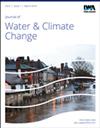Assessing soil erosion and its drivers in agricultural landscapes: a case study in southern Bahia, Brazil
IF 2.7
4区 环境科学与生态学
Q2 WATER RESOURCES
引用次数: 0
Abstract
Erosion is a worldwide threat to biodiversity conservation and agricultural yield, and it is linked to deforestation. In this study, we aim to assess soil loss in landscapes of the Cachoeira River watershed, in southern Bahia, northeastern Brazil. We estimate the role of forests in diminishing soil erosion using the Revised Universal Soil Loss Equation (RUSLE). We compare real and simulated scenarios in which the forest was replaced by agricultural use, also comparing estimates of erosivity factor (R factor) derived from remote sensing and climatological station data. Real and simulated annual soil losses varied from 0 to 167.87 t/year and from 0 to 351.81 t/year along the watershed, respectively. However, only 0.04 and 1.67% of this area is highly and severely exposed to erosion, using data from climatological stations and remote sensing, respectively. We showed that soil loss in the simulated deforested scenario was approximately two times higher than the real annual soil loss, indicating the importance of forest cover to mitigate soil erosion. Moreover, soil loss was 10.5 times greater when using precipitation data from remote sensing compared to climatological stations. Conclusively, the practice of agroforestry can be used as an alternative to avoid erosion.评估农业景观中的土壤侵蚀及其驱动因素:巴西巴伊亚州南部的案例研究
水土流失是对生物多样性保护和农业产量的世界性威胁,它与森林砍伐有关。在这项研究中,我们旨在评估巴西东北部巴伊亚州南部卡乔埃拉河流域的土壤流失情况。我们使用修订的通用土壤流失方程(RUSLE)估算了森林在减少土壤侵蚀方面的作用。我们比较了森林被农业用途取代的真实情景和模拟情景,还比较了从遥感和气候站数据中得出的侵蚀因子(R因子)估算值。实际和模拟的流域土壤年流失量分别为 0 至 167.87 吨/年和 0 至 351.81 吨/年。然而,根据气候站和遥感数据,该流域仅有 0.04% 和 1.67% 的区域受到严重侵蚀。我们的研究表明,模拟毁林情景下的土壤流失量约为实际年土壤流失量的两倍,这表明森林植被对减轻土壤侵蚀的重要性。此外,使用遥感降水数据时,土壤流失量是气候站数据的 10.5 倍。总之,农林业可作为避免水土流失的替代方法。
本文章由计算机程序翻译,如有差异,请以英文原文为准。
求助全文
约1分钟内获得全文
求助全文
来源期刊

Journal of Water and Climate Change
WATER RESOURCES-
CiteScore
4.80
自引率
10.70%
发文量
168
审稿时长
>12 weeks
期刊介绍:
Journal of Water and Climate Change publishes refereed research and practitioner papers on all aspects of water science, technology, management and innovation in response to climate change, with emphasis on reduction of energy usage.
文献相关原料
| 公司名称 | 产品信息 | 采购帮参考价格 |
|---|
 求助内容:
求助内容: 应助结果提醒方式:
应助结果提醒方式:


